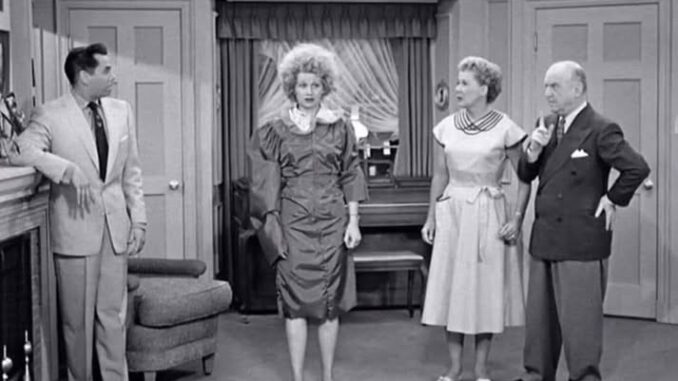
After the global phenomenon of I Love Lucy, Lucille Ball could have easily rested on her legacy. The six-season sitcom had not only cemented her as America’s favorite redhead but also transformed the television industry itself. Yet, for someone as ambitious and creatively restless as Ball, standing still was never an option. Still, few fans realize that her next big television project — the follow-up that came after the end of I Love Lucy — was never intended to last more than one season.
So why would one of the most successful women in entertainment willingly plan a short-lived series after creating the most iconic sitcom in history? The answer lies in a mix of personal reinvention, creative control, and a changing television landscape that forced Ball to rethink what success meant in Hollywood.
When I Love Lucy ended in 1957, Lucille Ball and her then-husband Desi Arnaz were exhausted — emotionally and physically. Their production company, Desilu, had become a television empire, overseeing hits like The Untouchables and Mission: Impossible. But their marriage was crumbling under the pressure of success. By 1960, the couple had divorced, and Ball had bought out Arnaz’s share of Desilu, becoming one of the first female studio heads in Hollywood.
That transition left her with a problem: she needed to prove she could lead Desilu on her own, both creatively and financially. The Lucy Show, which debuted in 1962, became her next big hit — but it wasn’t born out of a desire to create another long-running sitcom. Instead, Ball initially envisioned it as a short-term vehicle to help her ease back into acting after years of working behind the camera.
According to those close to the production, The Lucy Show was meant to be a one-season project that reunited Ball with longtime friend and I Love Lucy co-star Vivian Vance. The idea was simple: a comforting, familiar comedy that could keep audiences connected to Lucy’s charm while allowing her to experiment with new material. However, as soon as the show aired, it became clear that the public still had an enormous appetite for Ball’s comedic magic.
“The plan was always to do something lighter, maybe even temporary,” one former Desilu writer recalled in a retrospective interview. “But when the ratings came in, CBS immediately wanted more. Lucy still owned the screen.”
Still, there were reasons Ball hesitated to commit long-term. The early 1960s marked a turning point for television — the medium was shifting from family-centered comedies to more socially conscious and fast-paced programming. Ball, then in her early 50s, knew she couldn’t simply repeat I Love Lucy without evolving. Her new series, while still relying on slapstick and familiar setups, focused on mature women navigating friendship, independence, and financial responsibility — themes rarely addressed on TV at the time.
Behind the scenes, Ball’s personal goals also influenced her decisions. Having recently taken the reins at Desilu, she was managing far more than just her on-screen role. She was approving budgets, overseeing production schedules, and negotiating syndication deals. Running a studio was a full-time job, and The Lucy Show was, in some ways, a convenient creative outlet rather than a long-term career strategy.
Yet, fate had other plans. The show’s runaway success convinced CBS to continue production, and Ball, ever the perfectionist, couldn’t resist the challenge. Though it was initially designed to be a one-season experiment, The Lucy Show ultimately ran for six seasons and was followed by Here’s Lucy, which extended her television reign well into the 1970s.
Interestingly, Ball’s decision to keep the door open — rather than lock herself into another long contract from the start — gave her unprecedented flexibility. It allowed her to test new comedic styles, introduce fresh storylines, and gradually redefine what audiences expected from her.
“She knew she couldn’t just play Lucy Ricardo again,” said television historian Geoffrey Mark. “But she also understood that America needed to see a woman her age still being vibrant, funny, and in charge of her life. That’s what made The Lucy Show revolutionary in its own right.”
In truth, Lucille Ball’s “planned one-season” approach was a strategic move disguised as modesty. By keeping expectations low, she gave herself the creative breathing room to experiment without pressure. And once audiences fell in love all over again, she was ready to deliver — proving that her comedic genius wasn’t limited to one era or one character.
More than sixty years later, Ball’s decision to move forward so cautiously feels remarkably modern. Today, limited series dominate streaming platforms, with creators deliberately crafting short, powerful runs instead of endless seasons. In many ways, Lucille Ball anticipated this evolution decades before it became a trend.
The Lucy Show might have started as a temporary comeback project, but it became another chapter in the legacy of a woman who refused to be confined by success. For Ball, longevity was never the goal — reinvention was.
Lucille Ball’s influence continues to ripple through television today, from sitcom formats to the roles available to women in comedy. Her instinct to pivot, evolve, and take risks — even when she could have coasted on past glory — is precisely what made her one of the greatest innovators the medium has ever known.
Because sometimes, the best way to make history isn’t to plan forever — it’s to create something brilliant, even if it’s only meant to last one season.
